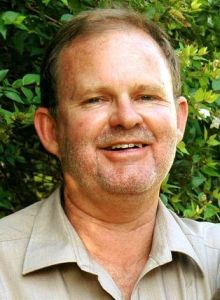Defining the public value of SAEON
|
SAEON functions as a non-profit public organisation. There are three management models for these organisations: the traditional bureaucracy, New Public Management (NPM) and Public Value Management (PVM) (Stoker 2006:44, O’Flynn 2007:353).
The traditional model is a tall hierarchy with an emphasis on “doing things right”. In reaction to the inefficiencies of the traditional model, the perspective of the NPM model is that public organisations should be managed like the private sector. However, Drucker (1989:89), in response to the NPM, remarked “non-profits need management more than business does because they lack the discipline of the bottom line”.
Realisations like this led to the conceptualisation of the PVM which aims to maximise public value in terms of “accountability, efficiency and equity” (Stoker 2006:46). In the PVM, the shareholder is deemed to be the taxpayer and “public managers do more than steer a market process; they balance technical and political concerns to secure public value” (Hefetz & Warner, 2004:171). Their work ethos therefore swings more towards “doing the right things”.
Public managers must “….find ways to achieve their desired social value at the lowest possible cost” (Moore & Khagram 2004:5). In following the PVM paradigm, SAEON’s “revenue” is not obtained from customers but from selling the story of affordable public value to the Department of Science and Technology (DST). This is an ongoing task because of continuous changes in the eco/Earth systems, technological advances, competitors and politics.
As a networked organisation, SAEON holds only partial authority over the various drivers of its public value. Therefore, in order to avoid the transactional costs of misunderstandings, distrust and reputation loss, it has to focus on relationship and trust building through a high quality communication strategy and leadership.
Defining SAEON’S public value and value drivers
In order to define the drivers of SAEON’s public value, it is necessary to first define its public value. The vision statement provides some clues: “SAEON is a comprehensive, sustained, coordinated and responsive in situ South African environmental observation network that delivers long-term reliable data for scientific research and informs decision-making; for a knowledge society and improved quality of life”.
Not surprisingly, the ultimate public value derived from SAEON as a public organisation is improved “Quality of Life” in the sense of improved quality of the environment (Figure 1). The primary value drivers are found in the way the organisation is structured and relates with its stakeholders (society, scientists, government, and industry). These drivers are ‘comprehensive, sustained, coordinated, and responsive’, and they work together to deliver the ‘currency’, or Primary Public Value of SAEON which is ‘Long-term Reliable Environmental Data’. SAEON has sufficient (though not total) control over these drivers to allow their use as Key Value Drivers.

SAEON is also in the position to enhance its Primary Public Value by using it for Scientific Research. Scientific Research is valuable in two ways — for use in Decision Making (policy by government, management and lifestyle decisions) or as input into formal and public education; both channels contribute to a Knowledge Society. In turn, a Knowledge Society either asks informed questions for Scientific Research and/or contributes to Decision Making at all levels (individual to societal).
By making SAEON’s data publicly accessible, this should contribute directly to Decision Making. Overall, evidence-based Decision Making leads to improved Quality of the Environment and by implication, of Life. The three generic Public Values (accountability, efficiency and equity) advocated by Stoker (2006:46) should pervade the SAEON value production processes.
Key Performance Indicators for SAEON
With regard to setting Key Performance Indicators as part of a management control system for public organisations, Spano (2009: 340) postulates that a “decision making process based on a close relationship between the institutional dimension, the political dimension and the corporate dimension” is required. For SAEON, the corporate is the National Research Foundation while the DST is the political dimension.
A first approach to SAEON’s KPI’s and standards is provided in Table 1; noting that:
- “the creation of a good system needs creativity and experiment and possibly renewal over time” (Hyndman & Eden 2000, cited by Micheli & Kennerley 2005:132);
- accounting for concrete outputs and activities does not provide reliable measures of public value (Moore & Khagram 2004:8);
- these KPIs aim to promote the corporate KPIs of scientific research and capacity development; and
- KPIs are aligned with the said three generic Public Values.
Although it is possible to assess the quality of the South African environment, the concept encompasses a multitude of causal factors (Department of Environmental Affairs and Tourism 2006:18, Durham & Pauw 2000), making it impossible to either credit or discredit SAEON in terms of its ultimate Public Value. It is also not appropriate to measure progress as a single outcome as this would not assist the finer management decisions that would amass to create the ultimate Public Value.
References
Department of Environmental Affairs and Tourism 2006. South Africa Environmental Outlook. A report on the state of the environment. Department of Environmental Affairs and Tourism, Pretoria. 371pp.
Drucker P 1989. “What Business Can Learn from Nonprofits.” Harvard Business Review 67(4): 88 – 93.
Durham BD & Pauw JC (eds) 2000. Summary Marine Biodiversity Status Report for South Africa. National Research Foundation, Pretoria.
Hefetz A & Warner M 2004. Privatization and Its Reverse: Explaining the Dynamics of the Government Contracting Process.’ Journal of Public Administration Research and Theory 14(2): 171 – 190.
Micheli P & Kennerley 2005. Performance measurement frameworks in public and non-profit sectors. Production Planning & Control 16(2): 125 – 134.
Moore MH & Khagram S 2004. On Creating Public Value – What business might learn from government about strategic management. Working Paper of the Corporate Social Responsibility Initiative published by the John F Kennedy School of Government, Harvard University, USA. 24pp.
O’ Flynn J 2007. From New Public Management to Public Value: Paradigmatic Change and Managerial Implications. The Australian Journal of Public Administration 66(3): 353 – 366.
Spano A 2009. Public Value Creation and Management Control Systems. International Journal of Public Administration 32: 328 – 348.
Stoker G 2006. Public Value Management: A New Narrative for Networked Governance? American Review of Public Administration 36(1): 41 – 57.












